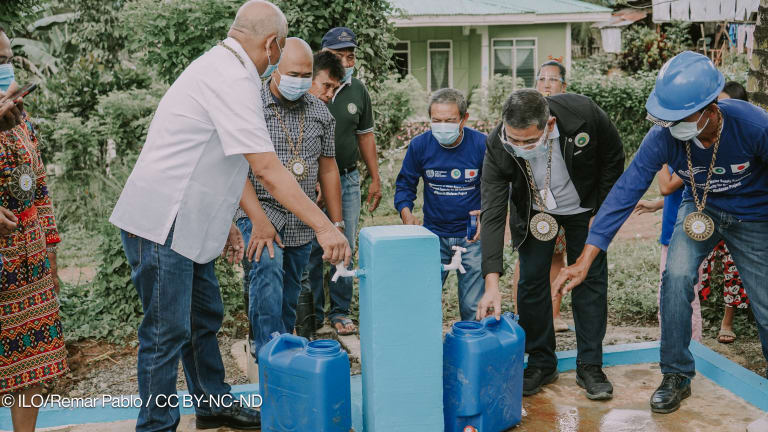
EDITOR’S NOTE: Like traditional donors, emerging donors differ from each other in the way they provide assistance. Paul Callan, Jasmin Blak, and Andria Thomas of Dalberg Global Development Advisors explain in this blog for the Council on Foreign Relations.
The first blog in this series addressed the attention given to Chinese foreign assistance. Yet China is only one of several emerging donor countries that are providing an increasingly significant contribution to development aid. Official development assistance from China is estimated at $2 billion annually, whereas Saudi Arabia gave over $5 billion in 2011, and South Korea and Turkey gave $1.3 billion each. Many emerging donors give more ODA as a share of gross national income than China’s 0.04 percent, including Hungary (0.11 percent), Poland (0.08 percent), and the United Arab Emirates (0.22 percent). The changing landscape of foreign aid will be driven as much or more by other emerging donors as by China alone. It is therefore important to understand the broader set of emerging donor countries.
Which are the emerging donor countries? At Dalberg, we define this group of countries as those which:
Have become substantial donors within the last 20 years;
Are not part of the OECD’s Development Assistance Committee or have only joined it in the past decade; and
Received aid and/or other development assistance themselves in the recent past (and may still be doing so).
With this definition, emerging donors include a wide range of countries, including the likes of Brazil, India, South Africa, Saudi Arabia, UAE, Hungary, Poland, Turkey, and South Korea, as well as China.
Emerging donor contributions have quintupled in the last five years; overall, they account for an estimated 7-10 percent of global aid flows from donor countries. In contrast with traditional OECD-DAC donors whose aid volumes are expected to stagnate in the medium term, aid from emerging donors is projected to double in the next five years, which means they could contribute close to 20 percent of total donor funding by 2020.
Emerging donors employ approaches to providing aid that are sometimes quite different from those of traditional donors. But, just as there are differences between traditional donors, there are also differences between emerging donors. Let’s look at some of the features of emerging donor development aid in more detail:
Expert advice and in-kind contributions. Many emerging donors feel that their greatest contributions can come from non-monetary support in the form of shared expertise from their own development. Some donors also feel that in-kind contributions mitigate the risk of funds being misused by recipient countries. Brazilian aid focuses heavily on providing “made in Brazil” solutions, especially in health, agriculture, and education. South Korea strongly believes that its aid should share experiences from South Korea’s own development and has invested in multiple large-scale advisory programs such as the South Korea International Cooperation Agency’s International Cooperation Center and the Knowledge Sharing Program of the Ministry of Strategy and Finance. India has partnered with the African Union to create the Pan-African e-Network, Africa’s largest long-distance education and tele-medicine initiative. The Indian government is providing in-kind investments totaling $125 million over five years to set-up the system and transfer knowledge to local implementers.
Explicit prioritization of national interests. Many emerging donors are not shy about saying that their development assistance is linked to national interests, including economic cooperation, promotion of regional stability, religious or cultural ties, and commercial opportunities. For example, “mutual benefit” or “win-win” economic development cooperation is a central tenet of Chinese and Indian assistance and characterizes India’s cooperation with many African countries. Prioritizing regional stability is another common motivating factor. For example, the majority of India’s aid supports infrastructure projects in neighboring countries such as Nepal, Bhutan, and Afghanistan, where India recently became the fifth-largest aid donor. Saudi Arabia and Turkey direct their aid primarily to fellow majority-Muslim countries. For example, Turkey provided assistance to Egypt following the Arab uprisings and over $500 million in public and private aid to famine-hit Somalis in 2011. However, some emerging donors, especially some Eastern European countries and South Korea (which joined the OECD-DAC in 2010), emphasize “altruistic” objectives and look to the Nordic countries as role models. Thus, motivations vary significantly among emerging donors, and there is no clear divide between traditional and emerging donors because both groups include donors with more altruistic and more national-interest-focused objectives.
Cooperation with traditional donors. Emerging donors as a group are enthusiastic about cooperation with each other and with traditional donors. Triangular cooperation initiatives, which normally partner a traditional donor from OECD-DAC with an emerging donor and a beneficiary developing country, are becoming common. In 2011 and 2012, India both received advice from Brazil on enhancing its social protection scheme in Delhi and provided information technology and outsourcing expertise to eight African countries in partnership with the World Bank. In Brazil, trilateral projects represent one-fifth of the total technical cooperation projects. For example, Brazil is working with Mozambique and the United States in a triangular cooperation focused on sharing the successes of the Brazilian response to the AIDS epidemic to enhance the strategy and execution of Mozambique’s own AIDS response. Though China has in the past been accused of prioritizing unilateral development cooperation, it is increasing its collaboration with other donors, especially through triangular cooperation arrangements as well as its recent partnership with the World Bank to promote global economic governance and development.
In this short post, we have touched upon a few features of emerging donors. But, as a whole, they are not understood very well. As their aid becomes increasingly important to recipient countries, development policymakers and practitioners will need to understand emerging donors – as a group and individually – much better.
Edited for style and republished with permission from the Council on Foreign Relations. Read the original article.








